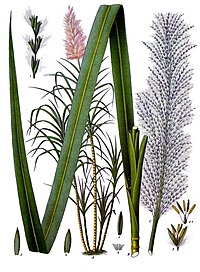
Photo from wikipedia
Sugar beet, an important sugar crop, is particularly cultivated in humid regions to produce beet sugar, fulfilling about 25% of the world’s sugar requirement, supplementing cane sugar. However, sugar beet… Click to show full abstract
Sugar beet, an important sugar crop, is particularly cultivated in humid regions to produce beet sugar, fulfilling about 25% of the world’s sugar requirement, supplementing cane sugar. However, sugar beet is not well adopted in the farming system of the tropics and subtropics, which is largely due to the historically well-established production technology of sugarcane and the lower awareness among local growers of sugar beet cultivation. Thus, the poor understanding of pest and disease management and the lack of processing units for sugar beet partially hinder farmers in the large-scale adaptation of sugar beet in the tropics and subtropics. Recent climatic developments have drawn attention to sugar beet cultivation in those regions, considering the low water demand and about half the growing duration (5–6 months) in contrast to sugarcane, sparing agricultural land for an extra crop. Nevertheless, a considerable knowledge gap exists for sugar beet when closely compared to sugarcane in tropical and subtropical growth conditions. Here, we examined the leverage of existing published articles regarding the significance and potential of sugar beet production in the tropics and subtropics, covering its pros and cons in comparison to sugarcane. The challenges for sugar beet production have also been identified, and possible mitigation strategies are suggested. Our assessment reveals that sugar beet can be a promising sugar crop in tropical and subtropical regions, considering the lower water requirements and higher salt resistance.
Journal Title: Agronomy
Year Published: 2023
Link to full text (if available)
Share on Social Media: Sign Up to like & get
recommendations!